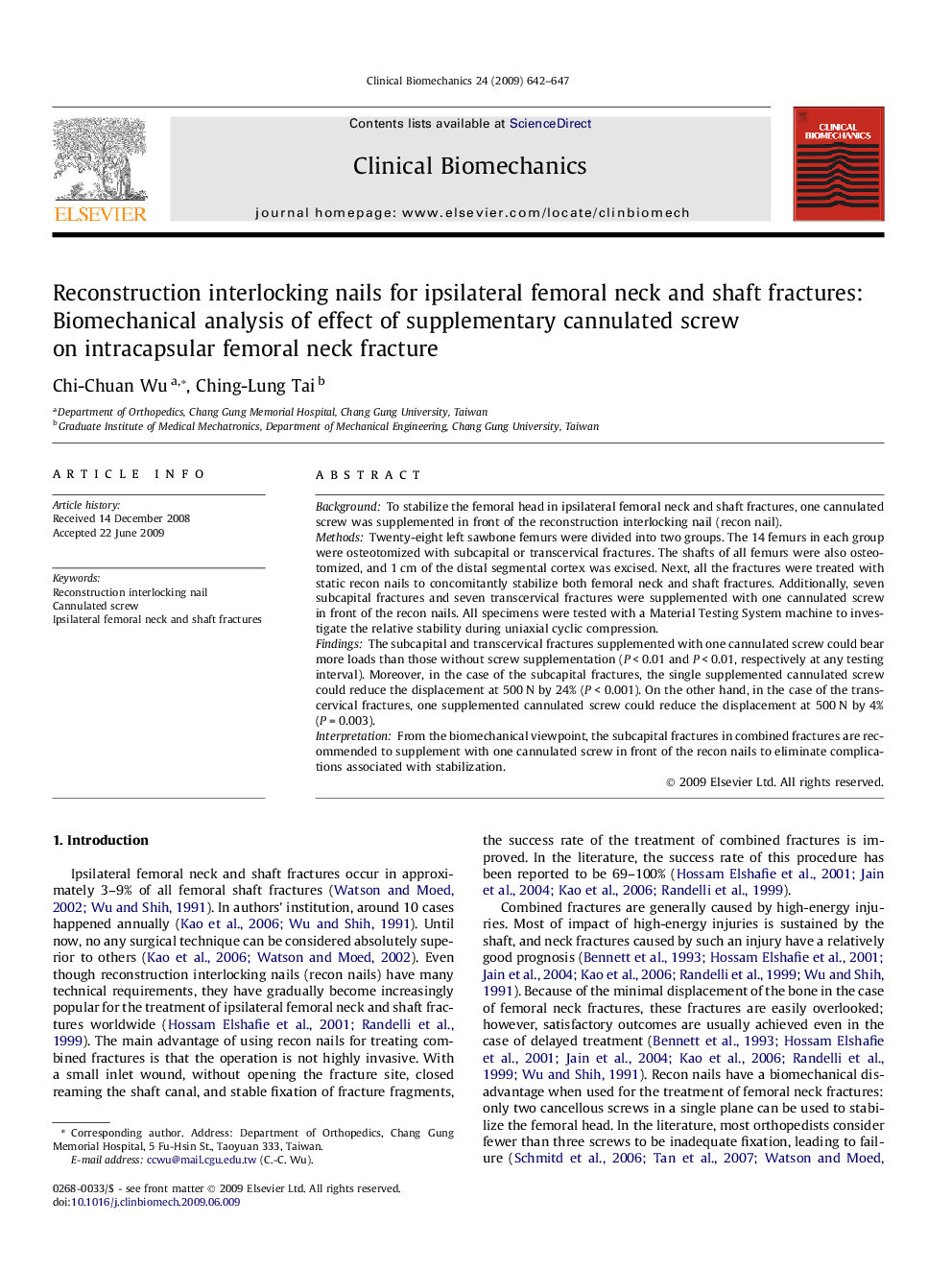| Article ID | Journal | Published Year | Pages | File Type |
|---|---|---|---|---|
| 4051240 | Clinical Biomechanics | 2009 | 6 Pages |
BackgroundTo stabilize the femoral head in ipsilateral femoral neck and shaft fractures, one cannulated screw was supplemented in front of the reconstruction interlocking nail (recon nail).MethodsTwenty-eight left sawbone femurs were divided into two groups. The 14 femurs in each group were osteotomized with subcapital or transcervical fractures. The shafts of all femurs were also osteotomized, and 1 cm of the distal segmental cortex was excised. Next, all the fractures were treated with static recon nails to concomitantly stabilize both femoral neck and shaft fractures. Additionally, seven subcapital fractures and seven transcervical fractures were supplemented with one cannulated screw in front of the recon nails. All specimens were tested with a Material Testing System machine to investigate the relative stability during uniaxial cyclic compression.FindingsThe subcapital and transcervical fractures supplemented with one cannulated screw could bear more loads than those without screw supplementation (P < 0.01 and P < 0.01, respectively at any testing interval). Moreover, in the case of the subcapital fractures, the single supplemented cannulated screw could reduce the displacement at 500 N by 24% (P < 0.001). On the other hand, in the case of the transcervical fractures, one supplemented cannulated screw could reduce the displacement at 500 N by 4% (P = 0.003).InterpretationFrom the biomechanical viewpoint, the subcapital fractures in combined fractures are recommended to supplement with one cannulated screw in front of the recon nails to eliminate complications associated with stabilization.
